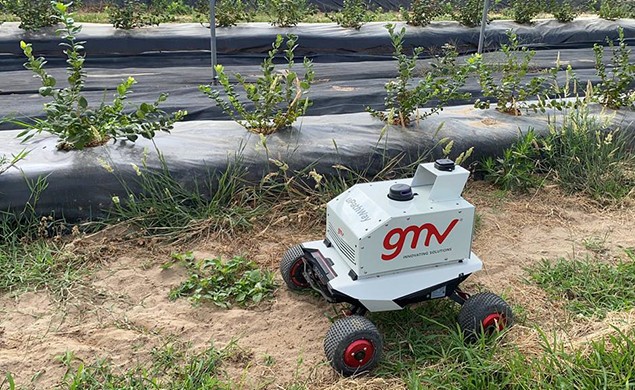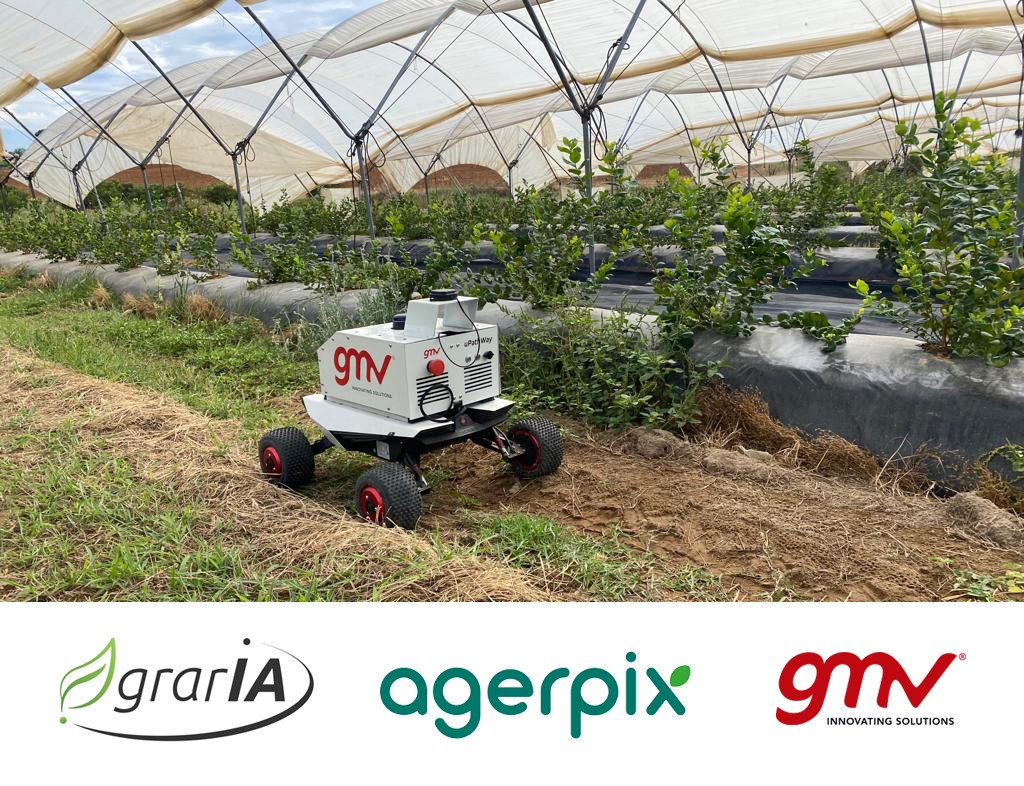Agerpix and GMV launch autonomous robot to optimize agricultural production

As part of the AgrarIA project, Agerpix Technologies and GMV are working together on a proof of concept to automate fruit production using artificial intelligence and robotics. The aim is to provide the agri-food sector with an autonomous robot equipped with artificial vision that can identify and select ripe crops for harvesting, carry out selective weeding, and apply spot treatments based on the needs it detects via imaging, among other functions.
So far, the robot has been tested and shown to be capable of autonomously moving around a field to assess the fruit and calculate the next harvest based on the collected data.
The AgrarIA project is funded by Spain’s Ministry of Economic Affairs and Digital Transformation, through the R&D Missions in Artificial Intelligence Program run by the State Secretariat for Digitalization and Artificial Intelligence (file no. MIA.2021.M01.0004), using funds from the country’s Recovery, Resilience, and Transformation Plan. This project seeks to explore the applicability and viability of artificial intelligence (AI), together with other technologies related to Industry 4.0, in real solutions to define new methods of agricultural production that will make the future Spanish agri-food sector more technologically-oriented, innovative, sustainable and committed to energy efficiency and the reduction of the carbon footprint.
The consortium involves 24 entities including large companies, SMEs and research centers with the common interest of strengthening the productivity of the Spanish agri-food sector through R&D activities. The engineering and technology companies (1A Ingenieros, Agerpix, Codesian Software Tech, Celtiberian Solutions, Dronetools, Emergya Grupo, GMV, HelixNorth, Hispatec, I-Solagua, LB-Bagging, Secmotic and TEPRO); the producers and processors (Familia Torres and Florette Ibérica); biotechnology companies (Sylentis and Kimitec) and distributors (Casa Ametller of the Ametller Origen Group, Kivnon Logística and Primafrio), which have the support of two research bodies (CSIC and ITCL) and two public universities (Universidad de Salamanca and the Department of Physical Geography and Regional Geographical Analysis of the Universidad de Sevilla).

